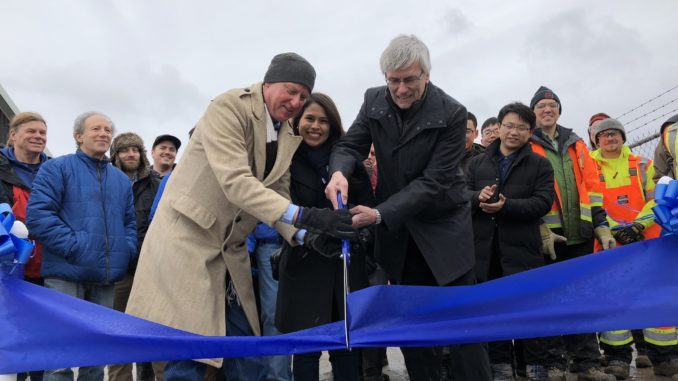
At Stake: Everglades Foundation’s $10 Million “George Barley Water Prize”
TORONTO, March 22, 2018 /PRNewswire/ — On World Water Day, 10 teams of scientists and engineers are racing against time to solve one of the most critical challenges facing the planet – the need to reduce algae-causing high levels of phosphorus in our rivers and lakes.
The 10 teams, from Canada, China, the Netherlands and the United States, are each hoping to win The Everglades Foundation’s $10 million George Barley Water Prize, an incentive award sponsored by Scott’s Miracle-Gro that is now in its third year. From an original cadre of 104 competitors, the 10 remaining teams are now testing their technologies in the frigid cold of Lake Simcoe Watershed, north of Toronto, Canada.
The Barley Prize, explained Everglades Foundation CEO Eric Eikenberg, is modeled after the incentive awards that inspired Charles Lindbergh’s solo flight from New York to Paris and that led to the development of commercial space travel.
“With $10 million at stake, we have attracted the attention of scientists and engineers from across the globe,” Eikenberg said. “Together, they have shone a bright light on the problem of excess nutrient pollution that is causing algae outbreaks in freshwaters across the globe.”
Phosphorus, the second most plentiful mineral in the human body, is essential to the growth of crops and plants and has long been used in chemical fertilizers. Its accumulation in waterways, however, is giving rise to the growth of algae that is sometimes toxic and always blocks sunlight from the life-giving grasses below the surface.
“When you put phosphorus in water and expose it to sunlight, it does what it is supposed to do – it stimulates the growth of plant material, in this case algae,” explained Dr. Melodie Naja, the Everglades Foundation’s chief scientist. The algae kills fish and wildlife, ruins beaches and boating and potentially poses a deadly threat to drinking water supplies across the planet.
No safe, effective and affordable means now exists for the removal of excess phosphorus, and efforts to reduce its use have been unsuccessful.
“We have tried litigation, legislation, regulation and education, so now we are putting our faith in innovation, hoping to inspire the world’s brightest scientific minds to find a solution,” explained Eikenberg.
“Each of these teams is advancing the science and economics of phosphorus removal, and they are proving that a very lucrative market exists,” explained Dr. Naja.
The 10 remaining teams will undergo three months of continuous testing in Ontario, after which the four most promising technologies will move on to Florida, where their methodologies will undergo full-scale testing over 14 months, Eikenberg explained.
The Barley Prize is presented by the Scott’s Miracle-Gro Foundation and supported by the National Fish and Wildlife Foundation (NFWF), the Knight Foundation, Xylem and the Ontario Ministry of the Environment and Climate Change.
CONTACT: Edyna Garcia
T: 786-374-6064
E: egarcia@evergladesfoundation.org
SOURCE The Everglades Foundation Inc
RELATED LINKS
www.evergladesfoundation.org


Leave a Reply